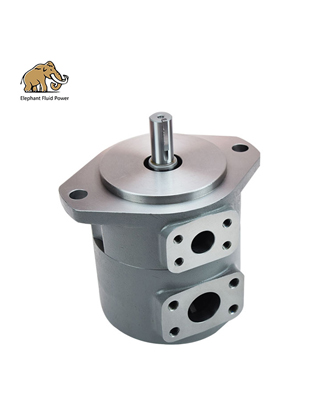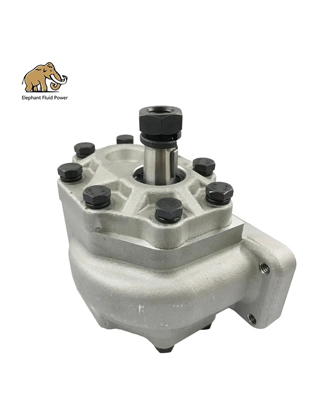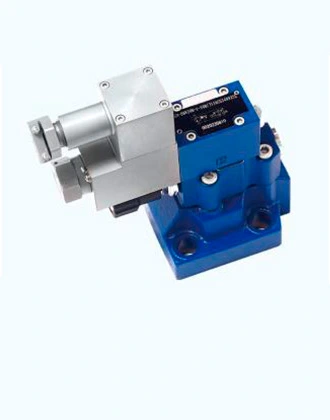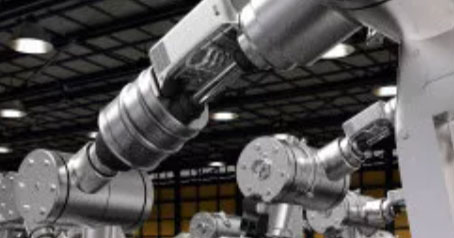Directional valves are vital components within hydraulic systems, serving as the traffic controllers that dictate the flow of hydraulic fluid. These valves are integral to the control of hydraulic actuators like cylinders and motors. In this blog, we'll delve into the significance of directional valves within hydraulic systems, exploring their applications and various types.
The Significance of Directional Valves
Directional valves play a role analogous to traffic signals in a bustling city. They determine the route through which hydraulic fluid flows, dictating the movement of hydraulic actuators. These actuators are responsible for performing various tasks in hydraulic systems, such as lifting, pushing, pulling, or rotating. In the absence of directional valves, hydraulic systems would lack the ability to precisely control the motion of actuators. Whether in construction machinery, manufacturing processes, or even aerospace applications, directional valves ensure that hydraulic systems operate with accuracy and efficiency.
Applications of Directional Valves
Directional valves find extensive use in construction equipment like excavators, backhoes, and loaders. These valves control the hydraulic cylinders responsible for tasks such as extending or retracting the bucket arm, raising and lowering the loader, and tilting the blade. In industrial settings, directional valves are integral to automated manufacturing processes. They regulate the movement of hydraulic actuators in machines responsible for assembling, shaping, or packaging products on production lines. In the aerospace industry, hydraulic systems rely heavily on directional valves to control critical components such as landing gear, wing flaps, and aircraft doors. The precise operation of these valves is paramount for ensuring safe and controlled flight operations.
Types of Directional Valves
Directional valves come in various types, each designed to suit specific applications and operational requirements. Spool valves are among the most common directional valves. They use a spool, a cylindrical component, to control the flow of hydraulic fluid. Depending on the valve's configuration, they can offer 2-way, 3-way, or 4-way flow paths. These valves are versatile and widely used in various industries. Poppet valves utilize spring-loaded discs (poppets) to regulate flow. They are known for their fast response times, making them suitable for applications that require quick changes in flow direction. Poppet valves are often used in high-pressure systems. Rotary valves utilize rotating mechanisms to control fluid flow. They are well-suited for applications requiring high flow rates and are often employed in scenarios where flow needs to be controlled precisely and consistently.
In conclusion, directional valves are the keystones of hydraulic systems, enabling controlled movement and operation of hydraulic actuators. Their applications range from construction machinery to aerospace, and their types vary to suit specific needs. By understanding their significance and functionality, we gain insights into the essential role directional valves play within hydraulic systems.
 French
French
 Portuguese
Portuguese
 Russian
Russian
 German
German
 Spanish
Spanish
 Japanese
Japanese
 Korean
Korean
 Irish
Irish
 Greek
Greek
 Turkish
Turkish
 Italian
Italian
 Danish
Danish
 Romanian
Romanian
 Indonesian
Indonesian
 Czech
Czech
 Afrikaans
Afrikaans
 Swedish
Swedish
 Polish
Polish
 Basque
Basque
 Catalan
Catalan
 Esperanto
Esperanto
 Hindi
Hindi
 Lao
Lao
 Albanian
Albanian
 Amharic
Amharic
 Armenian
Armenian
 Azerbaijani
Azerbaijani
 Belarusian
Belarusian
 Bengali
Bengali
 Bosnian
Bosnian
 Bulgarian
Bulgarian
 Cebuano
Cebuano
 Chichewa
Chichewa
 Corsican
Corsican
 Croatian
Croatian
 Dutch
Dutch
 Estonian
Estonian
 Filipino
Filipino
 Finnish
Finnish
 Frisian
Frisian
 Galician
Galician
 Georgian
Georgian
 Gujarati
Gujarati
 Haitian
Haitian
 Hausa
Hausa
 Hawaiian
Hawaiian
 Hebrew
Hebrew
 Hmong
Hmong
 Hungarian
Hungarian
 Icelandic
Icelandic
 Igbo
Igbo
 Javanese
Javanese
 Kannada
Kannada
 Kazakh
Kazakh
 Khmer
Khmer
 Kurdish
Kurdish
 Kyrgyz
Kyrgyz
 Latin
Latin
 Latvian
Latvian
 Lithuanian
Lithuanian
 Luxembourg
Luxembourg
 Macedoniar
Macedoniar
 Malagasy
Malagasy
 Malay
Malay
 Malayalam
Malayalam
 Maltese
Maltese
 Maori
Maori
 Marathi
Marathi
 Mongolian
Mongolian
 Burmese
Burmese
 Nepali
Nepali
 Norwegian
Norwegian
 Pashto
Pashto
 Persian
Persian
 Punjabi
Punjabi
 Serbian
Serbian
 Sesotho
Sesotho
 Sinhala
Sinhala
 Slovak
Slovak
 Slovenian
Slovenian
 Somali
Somali
 Samoan
Samoan
 Scots Gaelic
Scots Gaelic
 Shona
Shona
 Sindhi
Sindhi
 Sundanese
Sundanese
 Swahili
Swahili
 Tajik
Tajik
 Tamil
Tamil
 Telugu
Telugu
 Thai
Thai
 Ukrainian
Ukrainian
 Urdu
Urdu
 Uzbek
Uzbek
 Vietnamese
Vietnamese
 Welsh
Welsh
 Xhosa
Xhosa
 Yiddish
Yiddish
 Yoruba
Yoruba
 Zulu
Zulu







